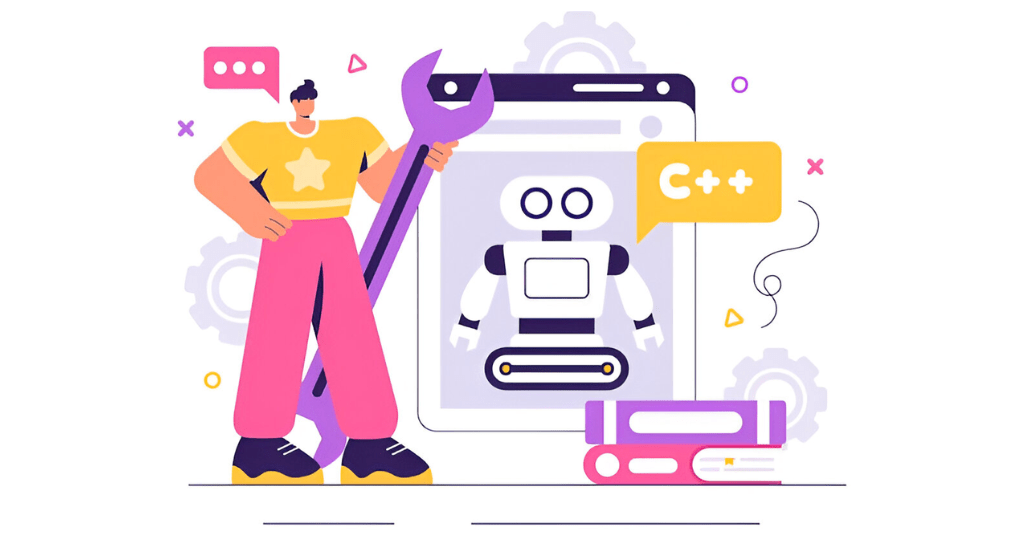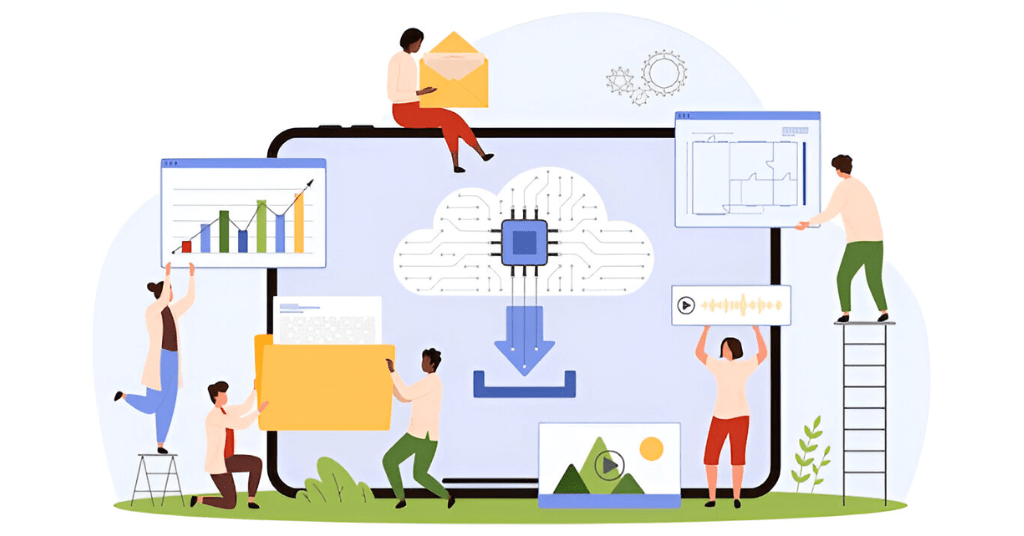How to Save Money on Artificial Intelligence – Artificial Intelligence is revolutionizing businesses by automating activities, managing massive amounts of data, and enhancing decision-making. Many companies and individuals are not keen on using Artificial Intelligence because it is perceived as being too expensive. Though top-tier AI software can be extremely pricey, you can leverage the potential of Artificial Intelligence without breaking the bank.
In this article, you will discover handy tips on how to save money to make it possible for you to enjoy AI technology without breaking the bank. You may be an individual entrepreneur, a startup, or a small business owner; wise planning can make Artificial Intelligence affordable and accessible to you. Knowing how to allocate resources and selecting the right tools of AI can go a long way in saving your cost and yielding your return on investment. Throughout the following few sections, we shall explore a number of cost-saving measures which enable you to utilize Artificial Intelligence correctly and at a reasonable cost.
How to Save Money on Artificial Intelligence –
Choose Open-Source AI Tools –
Open-source Artificial Intelligence software is one of the best ways to reduce costs. Open-source software is free of charge and usually has wonderful community support. Great open-source software such as TensorFlow, PyTorch, and OpenCV offer excellent features at no cost. Small organizations and developers can build good AI models on these platforms with no initial investment. Open-source Artificial Intelligence software is also customizable and flexible, i.e., you can apply them according to your own requirements. You will not be charged extra for functionality or features.

Choose Open-Source AI Tools
Open communities provide documentation, forums, and tutorials so that learning and application are simpler. Open-source AI software lowers development expense and encourages innovation at a relatively affordable price tag. It is a wonderful place to begin for whom ever wants to get into Artificial Intelligence without spending too much.
Use Pre-Trained Models Instead of Building from Scratch –
Developing an AI model from the ground up is costly and time-consuming. A better alternative is to use pre-trained Artificial Intelligence models. Pre-trained models have already been trained on a large quantity of data and can be fine-tuned and utilized in your specific application. OpenAI, Google Cloud AutoML, and IBM Watson have pre-built models for language processing, image identification, and so forth. With pre-trained AI, you spare the expense of an enormous data science team and save computational resources. These types of models are deployable in a very short span of time, precise, and efficient. Most providers have free tiers or pay-as-you-go models, which keep the expense in check. Companies can concentrate on incorporating such models into their applications instead of investing months into development. Leverage pre-trained AI, and you save project timelines and operational expenditure but gain access to the latest technology.
Leverage AI-as-a-Service (AIaaS) Platforms –
AIaaS platforms offer Artificial Intelligence software and services via the cloud. The paradigm enables customers to pay per consumption, hence a very good cost-saving strategy. AWS, Google Cloud AI, and Microsoft Azure are just a few platforms that offer various AI services, such as Machine learning, speech, and predictive analytics. AIaaS saves on massive infrastructure as well as considerable initial capital expenses. Rather than investing in costly servers or permanent AI staff, companies can rent up-to-date Artificial Intelligence capabilities on a pay-as-you-go basis.

AI-as-a-Service (AIaaS) Platforms
All the big AIaaS providers have elastic pricing plans, so you begin small and grow only as your requirement grows. That is flexible and wasteful. Utilizing AI-as-a-Service is one of the brightest ideas to have Artificial Intelligence integrated into your business operations without having your costs in hiding and your operations fine-tuned.
Start with Low-Cost or Free Trials –
Most Artificial Intelligence providers provide free trials or entry plans at very low cost. These enable businesses and developers to try features and monitor performance before becoming committed long term. Companies such as Google Cloud AI, IBM Watson, and RunwayML provide restricted but operational degrees of access to their Artificial Intelligence solutions in trials. Utilization of these offers presents you with a chance to gauge the value and fit of the Artificial Intelligence service to your needs. It also allows for piloting with no risk at all. Throughout the testing period, you pilot the functionality of how the AI works, pilot its efficiency, and map out areas to improve on. It ensures that you invest in only tools that bring returns. Aging experiments to begin with helps small businesses learn and prepare for deployable scalability. It needs to prevent wasteful spending on Artificial Intelligence without losing precious results and insights.
Outsource to Freelancers or Agencies Wisely –
Engaging full-time AI staff can be expensive, particularly for a small firm or startup. Outsourcing Artificial Intelligence work to freelancers or companies specializing in Artificial Intelligence is a cheaper option. You are able to engage experienced AI staff on a project-by-project basis from platforms such as Upwork, Fiverr, and Toptal. Outsourcing provides you with talent on a project-by-project basis without the expense of salaries as an overhead. To conserve even more, define your project goals and deliverables well before hiring. This avoids scope creep and allows for efficient use of time and money.

Outsource to Freelancers or Agencies Wisely
Flexible pricing options on differing cost requirements are also offered by most agencies. Properly planned outsourcing makes access to high-quality Artificial Intelligence development and maintenance possible without the cost of maintaining an in-house team. It even allows for scalability as per your need. Strategic outsourcing is a wise step for a person who wants to use Artificial Intelligence for the better at an affordable price.
Focus on ROI-Driven AI Use Cases –
To be frugal on Artificial Intelligence, spend only on use cases that give actual returns on investment (ROI). Most companies are throwing money away by employing AI merely to be a trendsetter and not without an approach of problem-solving. Rather, find areas within your company where Artificial Intelligence can reduce cost, increase productivity, or improve customer support. Some examples of such applications are automation of repetitive works, chatbot-based customer support, or AI utilization for supply chain optimization. These can be utilized to generate short-term savings and performance improvements.

Focus on ROI-Driven AI Use Cases
Ordering projects that generate the highest outcome value by defining your return on investment in Artificial Intelligence will make every dollar invested in Artificial Intelligence move your business ahead. Not going down wasteful or unnecessarily complicated projects keeps costs low. Intelligent, ROI-driven deployment of Artificial Intelligence is the biggest individual contributor to making the technology profitable as well as feasible.
Optimize Cloud Usage and Storage Costs –
Cloud AI services are cost-progressive, but the cost varies significantly if not regulated. To cut costs, you need to plan on how you use computer resources and cloud storage in an efficient manner. Most of the major cloud computing providers such as AWS, Google Cloud, and Microsoft Azure offer cost management features that monitor utilization and offer recommendations on the savings. Another of the most genius options is using spot instances or preemptible machines, which are significantly less expensive compared to regular ones. You can also schedule AI workloads to execute during off-peak times and switch off idle resources.

Optimize Cloud Usage and Storage Costs
Prudent data storage practices like file compression and removing redundant data reduce costs too. Selecting the right pricing plan and monitoring your usage habits from time to time can do wonders in terms of saving money. Efficient management of your cloud infrastructure keeps your Artificial Intelligence projects budget-friendly without any compromise on performance.
Upskill Internally Before Outsourcing –
Rather than investing in expensive external AI services, consider reskilling your internal staff with an initial knowledge of Artificial Intelligence. Upskilling your internal talent can reduce your dependence on expensive consultants or agencies. Some online platforms like Coursera, edX, and YouTube offer inexpensive or even free AI courses on fundamental concepts, tools, and applications. Your people can learn to utilize some of the most popular Artificial Intelligence tools, work with data, and even build simple AI models.

Upskill Internally Before Outsourcing
This internal experience allows your organization to make informed decisions on AI investments. It also improves coordination with external experts since your people will have a fundamental grasp. Finally, internal upskilling provides a sustainable foundation for AI innovation. It saves costs by converting your personnel into skilled users of Artificial Intelligence to offer assistance to ongoing projects without full reliance on third-party help.
Avoid Overengineering and Keep it Simple –
Overengineering is perhaps the most common mistake that leads to extraneous expense for Artificial Intelligence projects. Many teams create complicated solutions when a simple, affordable solution would be just as good. For example, rule-based automation may replace machine learning models for routine work at times. One should try to fix problems effectively rather than using AI merely because one can. An MVP approach is when you start small and experiment first before scaling. This avoids risks and does not have you investing heavily in functionalities you will not use. Keeping your Artificial Intelligence projects simple retains development costs and deploys them quicker. Simple systems are also easier to maintain and update. By resisting the urge to overengineer, you make your AI projects realistic, affordable, and aligned with your business objectives.
Monitor and Scale Gradually –
Reducing cost on Artificial Intelligence can be most effectively achieved by keeping it revved up all the time and revving up only when necessary. To rev up AI on a humongous scale to begin with might lead to wasted resources if the solution does not quite pan out as expected. Begin with an infinitesimal pilot to ascertain the effectiveness of your AI solution. Value it based on performance metrics prior to investing more.

Artificial Intelligence
This allows you to make decisions based on fact and minimize economic risk. Phased scaling also allows you to have headroom to be able to collect user feedback, correct bugs, and refine the system. By doing so, you can implement scaling in phases with positive results. This allows your spending to be aligned with real business value. Scaling and monitoring Artificial Intelligence wisely avoids wastage of funds and yields long-term success.
Conclusion –
Artificial Intelligence need not break your bank account. If you are prudent, you can get the benefits of AI without breaking the bank. Starting from leveraging open-source tools and pre-trained models to leveraging AIaaS platforms and beta tests, the scope for keeping costs low is huge. By outsourcing to go smart, growing ROI-driven projects, and training your employees in-house, you can save massive dollars as well. Do not overengineer and monitor how things are going before scaling and making it sustainable for your investments to be within control and cheap. With smart, sane choices, individuals and businesses can leverage Artificial Intelligence potential without selling dollars. Low-cost AI is within reach for the prudent who think ahead and are value-oriented rather than complexity-oriented.
Read Also Another Article –
How to Harness Artificial Intelligence Surging for Your Business
Frequently Asked Questions –
Q. 1. What are the cheapest ways to implement Artificial Intelligence in a small business?
Ans – The cheapest ways to implement AI in small business are through open-source AI offerings, prebuilt models, and AI-as-a-Service cloud services. Open-source resources like TensorFlow, PyTorch and OpenCV also elevate AI capabilities without the need to an incur licensing fee, which bodes well for startups and smaller teams. Pre-trained models can be very cost-effective since they are already trained on large corpora and need to only be fine-tuned and there is less pressure on expensive hardware. Because cloud-based systems like Google CloudAI, AWS, and Microsoft Azure are priced as pay-as-you-go, small business can tap into more advanced AI feature sets without the cost of expensive hardware. One benefit is that free samples and low-cost subscriptions allow you to try out A.I. tools before you buy them. Smaller businesses can also take advantage of the fast deployment, let alone the low cost of I, by beginning small and only scaling up when necessary.
Q. 2. Can open-source AI tools really help save money on Artificial Intelligence projects?
Ans – Yes, open-source AI tools are one of the most efficient means to cut cost in the AI projects. These resources are open source, free, and have been maintained by active dev communities to increasingly improve the tool’s performance and user-friendliness. On open-source platforms like TensorFlow, Keras, PyTorch, and Hugging Face, you do not have to purchase proprietary licenses or expensive software. These tools offer rather advanced features which can be matched to paid options and can be used to create ML models, NLP applications, and computer vision systems. Open-source AI tools can also be tailored to the exact requirements of a project, providing additional flexibility and cost control. The free tutorials, documentation, and forums available are just as good and will help to minimize your training costs. Far from it! For startups or any businesses that have limited resources, open-source Artificial Intelligence is an intelligent option to get the best performance at a fair price.
Q. 3. How do pre-trained models reduce the cost of Artificial Intelligence development?
Ans – Pre-trained models bring down the expense of Artificial Intelligence development by saving the initial effort it takes to create AI models. It is expensive to develop a model from scratch; You need a big dataset, lots of computing power, and talented AI personnel to build models, which is expensive. In contrast, pre-trained models are trained on large-scale datasets and are fine-tuned for a new task. This really cuts down your development cycle and saves you from having to invest heavily in infrastructure and hardware such as gpus and cloud computations. There are platforms like OpenAI, IBM Watson, and Google AutoML who provide good quality pre-trained models for tasks such as image recognition, language translation, text generation etc. These models are often integrated into applications with little code, saving money and time. Pre-trained computer vision models enable companies to get to the market quickly, reduce development risk, and cut costs for the project.
Q. 4. How can cloud-based AI services help in saving money on Artificial Intelligence?
Ans – Cloud-based AI services help in saving money on Artificial Intelligence by providing scalable and on-demand access to computing power storage and AI Rolealities. rather of investment inch costly Calculator hardware or construction in-house base Operators get approach artificial intelligence tools done platform care virago Web services (aws) microsoft cerulean and google obscure artificial intelligence. These services operate on a pay-as-you-go or subscription Representation allowing Operators to only pay for what they use. obscure providers too bid be direction tools employment analytics and auto-scaling Characteristics that Improve disbursement. Businesses can Use AI Uses faster without large upfront investments which makes it easier to Check ideas and scale successful ones. numerous obscure platforms bid clear tiers or run periods for artificial intelligence tools which is good for startups and mean companies. Cloud-based Artificial Intelligence makes it affordable to experiment Invent and grow without being held back by capital costs.
Q. 5. What is the best strategy to avoid overspending on Artificial Intelligence?
Ans – The best Plan to avoid overspending on Artificial Intelligence is to start small use cost-efficient tools and scale only when there is clear evidence of return on investment. businesses need top important problems that get extremely work resolved away artificial intelligence and void exploitation it for tasks that get work handled with simpler Answers. Instead of hiring large in-house teams’ companies can use freelance professionals or outsource to trusted agencies for specific AI tasks. in education done clear online courses get cut long costs and get the squad further independent. Leveraging free or low-cost trials from AI service providers helps in Checking the Productivity of tools before Add ting financially. Watching cast operation and be done metrics too helps inch devising knowledgeable decisions around foster investing. Avoiding overengineering and focusing only on essential Characteristics can cut unnecessary expenses. amp forward and focused access to ersatz word ensures be nest egg spell not with standing delivering great rate.




